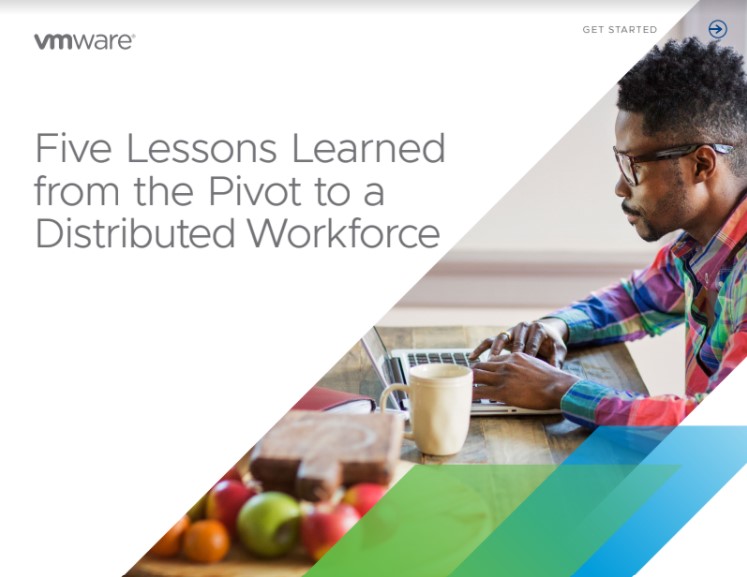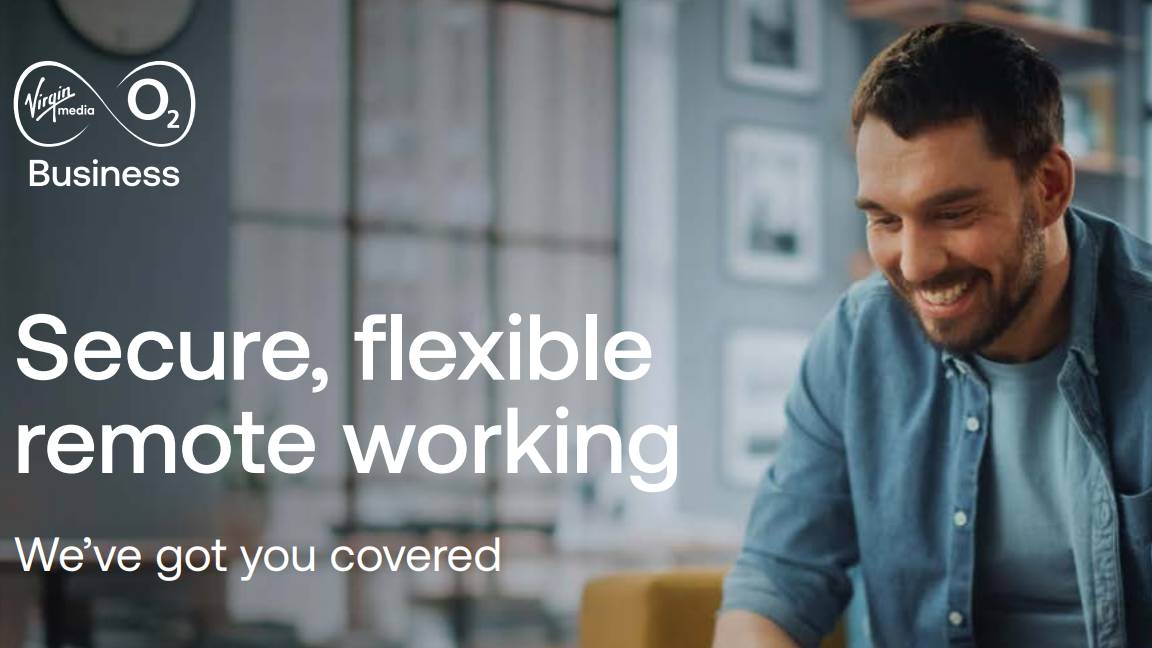How to manage people successfully from a distance
Hybrid working is here to stay, and that means new management tactics for CIOs


The last 18 months or so have been a disruption unlike any other for tech chiefs and their teams.
In many cases, it’s been largely thanks to IT teams that businesses were able to keep running when the pandemic hit. From enabling a shift to remote working almost overnight to transforming entire business models, IT departments have achieved more than we would’ve expected in normal circumstances in the office - and they’ve been able to do it from afar.
Working from home has been so successful for teams of all types that industry experts predict post-COVID workplaces will be a hybrid model of mixed home and office work. And, with studies and surveys proving that many employees want to hold onto the flexibility and increased productivity of home working, why should we force an unnecessary return?
According to research from the University of Strathclyde and the University of Manchester, fewer than one in ten workers want to return to the office full-time, while 78% would prefer to be in just two days or less and 31% want to work from home permanently.
There are many reasons why hybrid or remote working might not be a good idea - compromised security, concerns about company culture like Apple’s Tim Cook gave as reason for planning three days in-office, or, as Rishi Sunak believes, the ‘spontaneity’ of in-office work is unbeatable and employees will leave without it.
However, many employers are on board with the idea of hybrid work that fits their employees’ needs, and believe there’s no going back to pre-pandemic norms.
Take Nitin Chaturvedi, chief digital and technology officer at KFC Global, who believes businesses will probably end up with a hybrid model, where employees are in the office for some of the week and at home for the remainder. "I think most people probably agree on that," he says.
Get the ITPro daily newsletter
Sign up today and you will receive a free copy of our Future Focus 2025 report - the leading guidance on AI, cybersecurity and other IT challenges as per 700+ senior executives
The Chartered Institute of Personal Development (CIPD) reports that 40% of employers expect more than half their workforce to work regularly from home after the pandemic. That's quite a shift – prior to COVID-19 only 5% of the workforce worked mainly from home, according to the Office of National Statistics.
But if hybrid working is to become the new normal, how will CIOs manage their IT teams? What lessons have they learnt during the past 12 months and what does successful leadership from afar look like?
A change in culture
The CIPD research suggests the move to hybrid working will require a significant culture shift, with new ways of working and associated policies and practices. The good news, as the great work-from-home experiment moves to the operational phase, is that CIOs have learnt valuable lessons from supporting remote working during the past 12 months.
Lily Haake, head of the CIO practice at recruiter Harvey Nash, says IT chiefs must focus on staff demands. Her firm's research suggests a quarter of digital leaders think the majority of employees will continue to work predominantly from home. CIOs will have to think very carefully about how they motivate their disparate workforce.
"One thing CIOs should be preparing for is how to ensure that people are engaged, rewarded and productive in a world where physical presence is just less important," says Haake, adding that tech chiefs must keep a careful eye on employee retention.
RELATED RESOURCE

Three tips for leading hybrid teams effectively
A guide to employee motivation and engagement for business leaders
The things that have traditionally tied workers to their employers, such as a short commute, have become irrelevant while working from home. If CIOs aren't careful, they could easily lose their top team members to rival organisations who are offering more money or perhaps a better employee experience, says Haake.
"Finding ways to keep people motivated remotely is a minefield and people are striving to find the perfect solution," she says. "Honest communication and recognition are crucial. It's also really important to shout about what your people have achieved; make sure that they're recognised for the amazing things they do."
RELATED RESOURCE

Five lessons learned from the pivot to a distributed workforce
Improve employee experience and support IT teams for a more adaptable distributed workforce
That's a sentiment that resonates with Laura Dawson, CIO at the London School of Economics, who believes empathy is a crucial element for motivation. She says successful leaders have remained open and accessible to anyone in their team during the pandemic – and they'll continue to use similar tactics to ensure remote workers feel connected.
James Maunder, CIO at private hospital The London Clinic, also believes it's important to focus on strong personal interactions. Executives who manage people successfully from a distance ensure they maintain human connections, which have a tendency to get lost when people don't bump into each other at the water cooler.
That can mean setting ground rules for work, too: "If I see one of my team members repeatedly messaging me on a Sunday, for example, I will – with curiosity – explore why they feel they need to work on a Sunday," says Maunder.
A new approach to business
CIPD and Microsoft research suggests that the workday is often longer at home, with one in three (30%) UK employees working beyond their shift. The research suggests employees also miss meeting colleagues in person, with 65% saying it's what they miss most about the office. The conclusion from the research is that bosses must focus on worker wellbeing.
Thankfully, the most effective managers have learnt during the past year that leading from a distance requires a new engaged approach. Rob Doepel, partner at consultancy firm Ernst & Young, says traditional command and control tactics are unlikely to work in a world of work where your people are spread across a range of locations rather than the next desk.
"It's about having the power, confidence and trust in your teams to pull yourself back and give them space," says Doepel. "Trust the process, step back and think about what you can do as a coach and empower your team, and not switch back into, perhaps, a different way of leadership that we know is not as effective."
While leading from afar hasn't always been easy, the best managers have learnt during the past 12 months that empowering staff to make their own choices has produced big benefits. As Boots UK CIO Rich Corbridge suggests, tech chiefs have often had to give their staff leadership opportunities – with unexpected benefits.
"We've moved people around into new roles," he says. "People who've never touched marketing before are now leading martech projects. We've got people who hadn't done real leadership roles that have been able to shine in such a way because of this environment and they're now leading big teams doing important work."
Such forms of empowerment are promising. Just as there's now probably no return to the presenteeism of the past, there's also hopefully no return to the traditional command and control styles of leadership. The best leaders have gained the confidence to let employees set their own work agenda – and, in the long term, that should provide benefits for everyone.

Mark Samuels is a freelance writer specializing in business and technology. For the past two decades, he has produced extensive work on subjects such as the adoption of technology by C-suite executives.
At ITPro, Mark has provided long-form content on C-suite strategy, particularly relating to chief information officers (CIOs), as well as digital transformation case studies, and explainers on cloud computing architecture.
Mark has written for publications including Computing, The Guardian, ZDNet, TechRepublic, Times Higher Education, and CIONET.
Before his career in journalism, Mark achieved a BA in geography and MSc in World Space Economy at the University of Birmingham, as well as a PhD in economic geography at the University of Sheffield.
-
 Bigger salaries, more burnout: Is the CISO role in crisis?
Bigger salaries, more burnout: Is the CISO role in crisis?In-depth CISOs are more stressed than ever before – but why is this and what can be done?
By Kate O'Flaherty Published
-
 Cheap cyber crime kits can be bought on the dark web for less than $25
Cheap cyber crime kits can be bought on the dark web for less than $25News Research from NordVPN shows phishing kits are now widely available on the dark web and via messaging apps like Telegram, and are often selling for less than $25.
By Emma Woollacott Published
-
 Young tech professionals are shunning a full-time return to the office – unless it pays more
Young tech professionals are shunning a full-time return to the office – unless it pays moreNews Young tech professionals who entered the workforce post-pandemic expect on-site work to be paid more than remote options.
By Emma Woollacott Published
-
 ‘Employers must look at the bigger picture’: Brits aren’t keen on going back to the office, and enterprises pushing for it risk a talent exodus – 48% of UK professionals would quit if faced with a full RTO mandate as hybrid work remains popular
‘Employers must look at the bigger picture’: Brits aren’t keen on going back to the office, and enterprises pushing for it risk a talent exodus – 48% of UK professionals would quit if faced with a full RTO mandate as hybrid work remains popularNews Nearly half of professionals would consider quitting rather than returning to the office full time
By Nicole Kobie Published
-
 IT professionals aren’t budging on flexible work demands – and more than half say they’ll quit if employers don’t meet expectations
IT professionals aren’t budging on flexible work demands – and more than half say they’ll quit if employers don’t meet expectationsNews Analysis from Randstad shows 40% of UK-based IT pros have quit over a lack of flexible work options, while 31% of workers globally have done the same.
By Ross Kelly Published
-
 'The tide seems to be turning towards office attendance': 64% of hybrid business leaders want staff back in the office – but many worry that enforcing RTO mandates will drive employees away
'The tide seems to be turning towards office attendance': 64% of hybrid business leaders want staff back in the office – but many worry that enforcing RTO mandates will drive employees awayAnalysis Many UK business leaders want their staff back in the office more frequently, but they’re scared to implement return to office (RTO) mandates in fear of worker revolts.
By George Fitzmaurice Published
-
 Employees are dead set on flexible working arrangements – three quarters would turn down a role that didn't offer hybrid options as work-life balance becomes more important than pay
Employees are dead set on flexible working arrangements – three quarters would turn down a role that didn't offer hybrid options as work-life balance becomes more important than payNews New research shows workers are increasingly demanding flexible working arrangements from employers.
By Emma Woollacott Published
-
 Rugged devices
Rugged devicesWhitepaper A closer look at the challenges and rewards of fully supporting a flexible workplace
By ITPro Published
-
 Secure, flexible remote working
Secure, flexible remote workingWhitepaper A closer look at the challenges and rewards of fully supporting a flexible workplace
By ITPro Published
-
 Work smarter, not harder
Work smarter, not harderWhitepaper A closer look at the challenges and rewards of fully supporting a flexible workplace
By ITPro Published